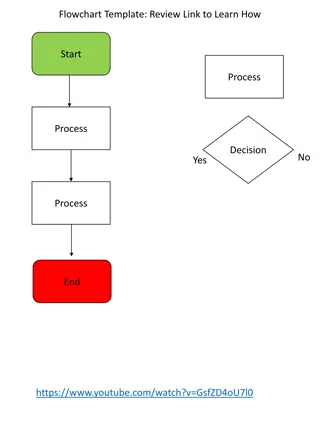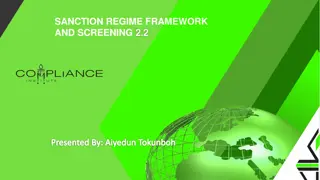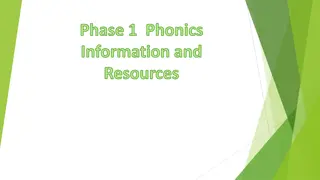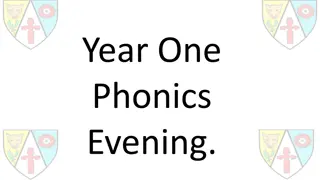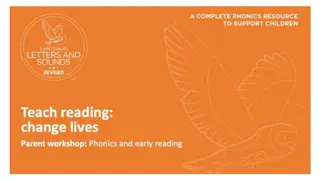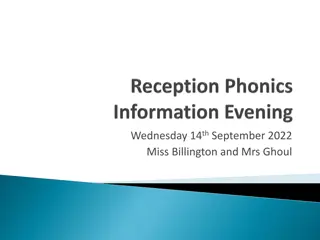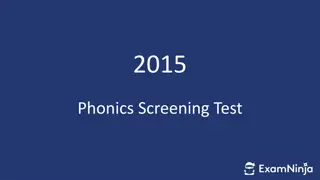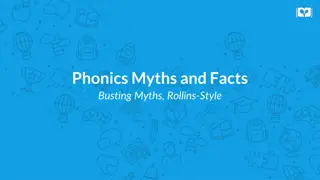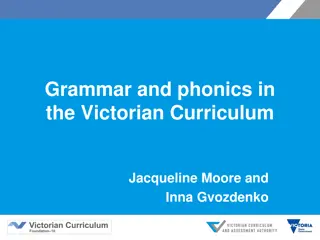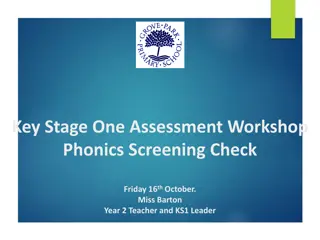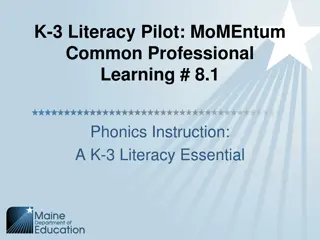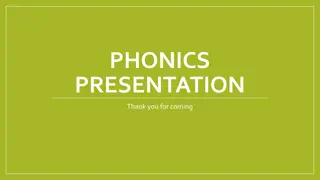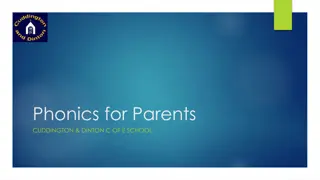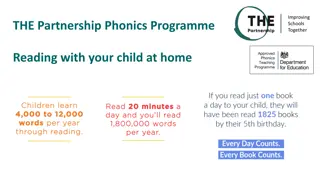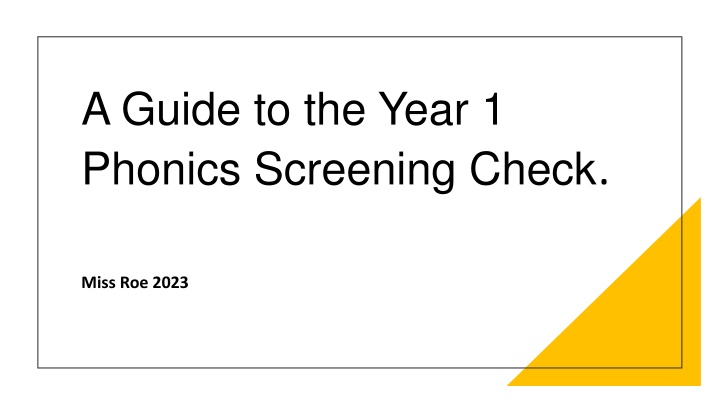
Ultimate Guide to Year 1 Phonics Screening Check
Enhance your understanding of the Year 1 Phonics Screening Check - its purpose, content, administration, and exemptions. Learn about the importance of reading non-words and how the check evaluates children's phonics knowledge. Get insights into the pass score criteria and why it's a vital assessment tool in primary education.
Download Presentation

Please find below an Image/Link to download the presentation.
The content on the website is provided AS IS for your information and personal use only. It may not be sold, licensed, or shared on other websites without obtaining consent from the author. If you encounter any issues during the download, it is possible that the publisher has removed the file from their server.
You are allowed to download the files provided on this website for personal or commercial use, subject to the condition that they are used lawfully. All files are the property of their respective owners.
The content on the website is provided AS IS for your information and personal use only. It may not be sold, licensed, or shared on other websites without obtaining consent from the author.
E N D
Presentation Transcript
A Guide to the Year 1 Phonics Screening Check. Miss Roe 2023
What is the Year 1 Phonics Screening Check? The Year 1 Phonics Screening Check was introduced in 2012 as part of a Government policy to strengthen phonics teaching in Primary Schools and reflect the emphasis on teaching Phonics systematically and synthetically. Systematically - starting with the letters of the alphabet and building up to more complex combinations of letters making one sound Synthetically - breaking up words into their smallest units of sound and then blending these sounds together to read words.
What does the check involve? During the screening check, children will be asked to read a list of 40 words to check their grapheme recognition and decoding skills. The words are made up of real words and non-words.
Why do children need to read non-words? Reading non-words acts as a useful tool to check whether children are secure in their phonic knowledge and can apply this knowledge when reading any word (either real or made up). They check if children are using their decoding skills rather than relying on memorising the words. These types of words will be highlighted on the word list with a picture of an alien so children realise they do not have to try and make it a real word.
How will the check be administered? The check will normally be administered by a familiar adult in a familiar environment and usually takes less that 10 minutes. There are 2 sections to the check. Section 1: words using graphemes from the earlier phases of Phonics including Phase 3 digraphs and adjacent consonants. Section 2: words that contain Phase 5 alternative graphemes and split digraphs.
Do all Year 1 children have to take the test? A headteacher may decide that it is not appropriate for some Year 1 pupils to participate in the phonics screening check including: Children working well below the expected standard in phonics. Those that have limited fluency in English or have recently moved to the UK and are unable to understand English letters and sounds. Those that use British Sign Language (BSL) or other sign supported communication to spell out individual letters and sounds. Children who are mute or selectively mute.
What is the pass score? Each year the score children need to achieve in order to pass the screening check isn t announced until after the check has been administered. For the past several years though the pass score has remained at 32/40 The results of the screening check are submitted to the local authority by the school.
What happens if children dont pass the check? If children don t achieve the pass score it is nothing to worry about. Teachers will be able to use the results to inform their future phonics planning, fill any gaps in children s knowledge and potentially offer additional support. Children that do not pass the check at the end of Year 1 will get another chance and take it again in the summer term of Year 2.
How can I help my child prepare? Share decodable books together and encourage them to segment and blend the words. Play fun and practical games where they are asked to read real and non-words Scan this QR code to access a list of real and non-real words on your smartphone or tablet. Practise them with your child regularly.

